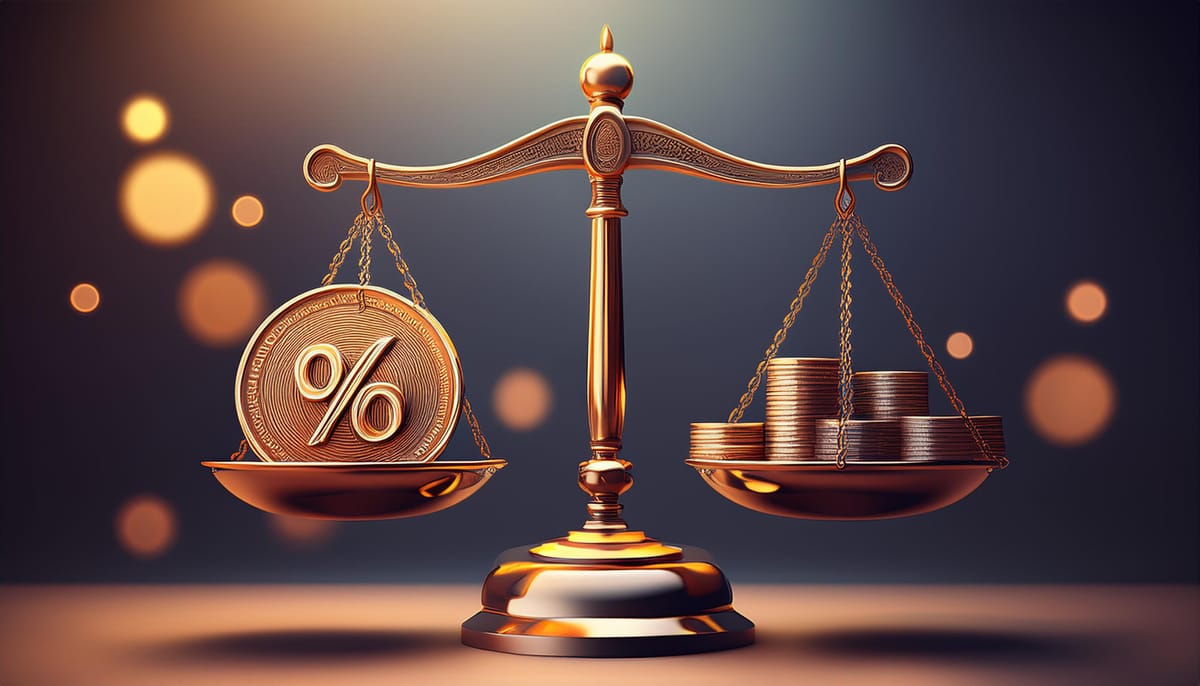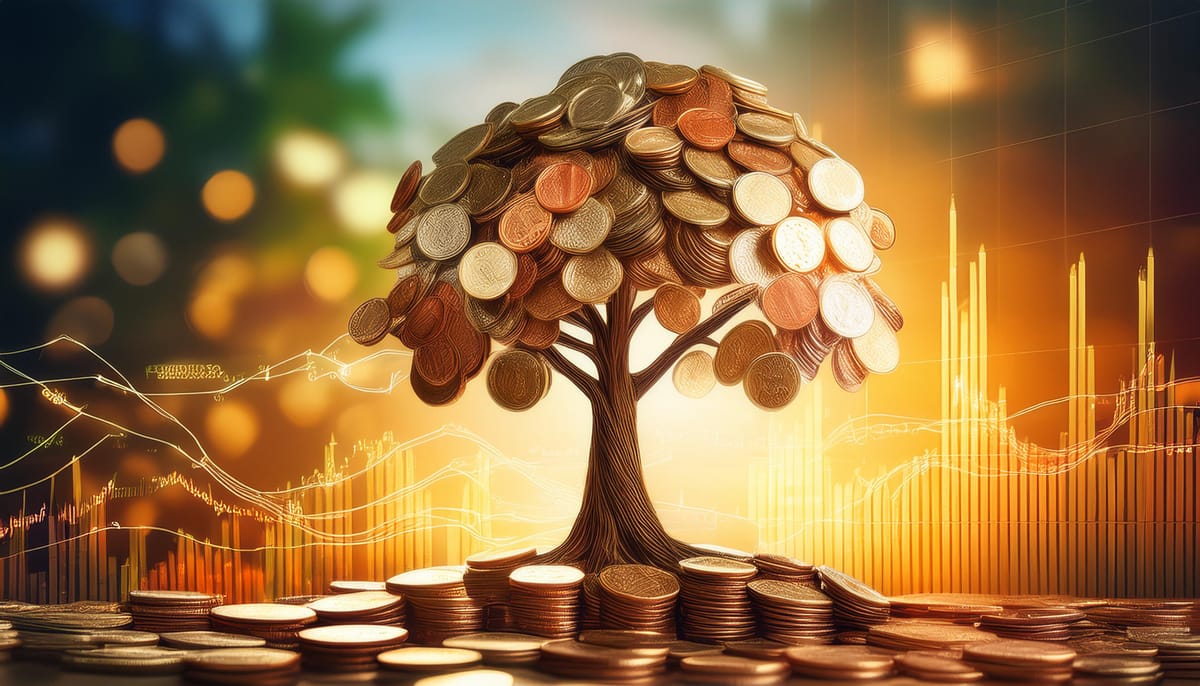In the dynamic world of corporate finance, understanding and leveraging the sustainable growth rate (SGR) is crucial for businesses aiming to achieve long-term success. This powerful metric provides invaluable insights into a company's growth potential without resorting to external financing. In this comprehensive guide, we'll delve deep into the concept of sustainable growth, its calculation, importance, and effective application in business strategy.
What is Sustainable Growth Rate?
The sustainable growth rate (SGR) represents the maximum growth rate a company can achieve using its own internal resources without requiring additional external financing. This financial metric is essential for businesses to understand their growth potential within their current capital structure. Evaluating a company's growth trajectory involves analyzing the SGR and various external factors that can impact this growth.
The sustainable growth rate is fundamentally linked to a company’s profitability and its policy on reinvesting earnings. By understanding and optimizing their sustainable growth rate, businesses can set realistic growth targets, manage their existing capital structure effectively, and maintain financial health.

Discover how capital structure impacts your company's financial health and growth potential
The Sustainable Growth Rate Formula: A Step-by-Step Guide
Calculating the sustainable growth rate is a straightforward process that involves key financial metrics, including the company's net income, which is the retained cash inflow after taxes and deductions. The basic sustainable growth rate formula is:
SGR = Retention Rate × Return on Equity (ROE)
Let’s walk through an example to illustrate the SGR calculation:
Suppose a company has the following financial data:
- Net Income: $10 million
- Dividends Paid: $3 million
- Average Shareholders’ Equity: $50 million
- Calculate the Dividend Payout Ratio: $3 million ÷ $10 million = 0.3 (30%)
- Calculate the Retention Rate: 1 - 0.3 = 0.7 (70%)
- Calculate Return on Equity (ROE): $10 million ÷ $50 million = 0.2 (20%)
- Calculate the Sustainable Growth Rate: 0.7 × 20% = 14%
In this example, the company’s sustainable growth rate is 14%, meaning it can grow at this rate annually without requiring external financing.
To further illustrate, let’s use a sustainable growth rate calculator:
| Input | Value |
|---|---|
| Net Income | $10,000,000 |
| Dividends | $3,000,000 |
| Shareholders' Equity | $50,000,000 |
| Calculated SGR | 14% |
This sustainable growth rate calculator helps companies quickly determine their maximum growth rate without the need for additional financing.

Explore how dividend policies affect your company's growth potential and shareholder value
The Importance of Sustainable Growth Rate in Business Strategy
Understanding and effectively utilizing the sustainable growth rate is crucial for businesses aiming to achieve long-term success. The SGR plays a vital role in financial planning, capital structure management, dividend policy, risk assessment, and strategic decision-making. Additionally, evaluating a company's sustainable growth rate against the country's GDP growth rate can provide insights into its economic performance.
Why is the sustainable growth rate important? It helps companies:
- Set realistic growth targets aligned with their financial capabilities
- Optimize their current capital structure and payout ratio
- Identify potential financial risks before they become critical
- Benchmark performance against industry peers
- Communicate growth potential effectively to investors and stakeholders
A high sustainable growth rate often indicates that a company is effective at optimizing its operations, focusing on high-margin products, and managing its working capital efficiently. However, it’s important to note that a good sustainable growth rate depends on various factors, including the industry, life cycle stage, and economic conditions.
For investors and creditors, the sustainable growth rate serves as an indicator of a company’s financial stability and future growth prospects. A consistently high sustainable growth rate may suggest that a company is well-positioned for long-term success, while a low SGR might indicate potential challenges or limitations in the business model.
Limitations and Effective Use of Sustainable Growth Rate
While the sustainable growth rate is a powerful financial metric, it’s important to understand its limitations for effective use in business planning and decision-making. These limitations include assumptions of constant conditions, lack of consideration for external factors, and potential oversimplification of complex business realities.
Despite these limitations, businesses can effectively use the SGR when applied with proper context and supplementary analysis. Retained earnings play a crucial role in leveraging the sustainable growth rate, as managing these earnings wisely can enhance a company's financial health and reduce reliance on external funding. Best practices include:
- Using SGR as a starting point for growth planning, not as an absolute target
- Combining SGR analysis with other financial metrics and market research
- Regularly recalculating the sustainable growth rate to reflect changing business conditions
- Considering industry-specific factors when interpreting SGR results
- Using SGR for comparative analysis within the same industry to benchmark performance
By following these guidelines, companies can maximize the utility of the sustainable growth rate in their financial planning and strategic decision-making processes.
Sustainable Growth Rate in Action: Real-World Applications
To truly understand the power of the sustainable growth rate, let’s examine how it can be applied in various business scenarios:
| Scenario | Application |
|---|---|
| Evaluating Expansion Opportunities | Compare projected growth rate of expansion plans to SGR to determine funding needs |
| Adjusting Dividend Policy | Use SGR to inform decisions on increasing or decreasing dividend payout ratios |
| Industry Comparison | Benchmark SGR against industry peers to gauge relative financial health and growth potential |
| Identifying Financial Stress | Monitor actual growth rate against SGR to spot potential over-leveraging or equity dilution |
| Long-term Planning | Use SGR to set realistic long-term growth targets and develop appropriate strategies |
Understanding revenue growth is crucial for forecasting sales and advancing long-term business planning, as it plays a significant role in maximizing sales without excessive financial leverage. By applying the sustainable growth rate concept in these scenarios, businesses can make more informed decisions about their growth strategies, financial policies, and resource allocation.
Achieving Sustainable Growth: Strategies for Success
To achieve sustainable growth and maintain a healthy SGR, companies can implement several strategies:
- Focus on improving profitability through efficient operations and cost management
- Optimize working capital management to enhance cash flow
- Develop a balanced dividend policy that supports both shareholder returns and reinvestment
- Explore organic growth opportunities that align with the company’s core competencies
- Consider strategic acquisitions that complement existing operations and enhance growth potential
- Invest in research and development to drive innovation and maintain competitiveness
- Manage financial leverage carefully to balance growth opportunities with financial risk
Understanding the sustainable growth rate helps businesses develop long-term plans, maximize sales efforts, and maintain financial health by avoiding over-leveraging, ultimately driving sales and revenue growth.
By implementing these strategies, companies can work towards achieving and maintaining a high sustainable growth rate, supporting long-term business success.
Conclusion: Harnessing the Power of Sustainable Growth Rate
The sustainable growth rate is a powerful tool in the arsenal of financial metrics available to businesses. By mastering SGR calculation and interpretation, companies can set realistic growth targets, optimize their capital structure, identify potential risks, and effectively communicate growth potential to stakeholders.
While it's important to recognize the limitations of the SGR, when used in conjunction with other financial analyses and market insights, it provides invaluable guidance for sustainable, long-term business growth.
As you navigate the complex world of corporate finance and growth strategies, remember that the sustainable growth rate is not just a number—it's a roadmap to balanced, sustainable expansion that can drive your company's success for years to come.
FAQ: Common Questions About Sustainable Growth Rate
Q: How often should a company calculate its sustainable growth rate?
A: It’s advisable to calculate the SGR at least annually, or more frequently if there are significant changes in the business environment or company financials.
Q: Can a company’s actual growth rate exceed its sustainable growth rate?
A: Yes, but this typically requires external financing or changes in financial policies, which may impact the company’s capital structure and financial risk profile.
Q: Is a higher sustainable growth rate always better?
A: Not necessarily. While a high SGR can indicate strong growth potential, it’s important to balance growth with other financial considerations, such as shareholder returns and financial stability.
Q: How does industry affect sustainable growth rate?
A: Different industries may have varying capital requirements, profit margins, and growth potentials, which can significantly impact the typical SGR for companies within that sector.
Q: Can the sustainable growth rate be negative?
A: Yes, if a company is experiencing losses or paying out more in dividends than it earns, the SGR can be negative, indicating the company may need to shrink or require additional financing to maintain operations.
Q: What is the sustainable growth rate equation?
A: The sustainable growth rate equation is used to calculate the rate at which a company can grow its sales, earnings, and dividends without having to increase equity or debt financing. The formula is: SGR = ROE * (1 - Dividend Payout Ratio). Understanding the components of this equation, such as net income and return on equity (ROE), is crucial for accurate application.
Ready to take your understanding of sustainable growth rate to the next level? Sign up for our free newsletter to receive regular insights on financial metrics, growth strategies, and investment analysis directly in your inbox. Don’t miss out on the knowledge that could drive your business or investment decisions to new heights!





